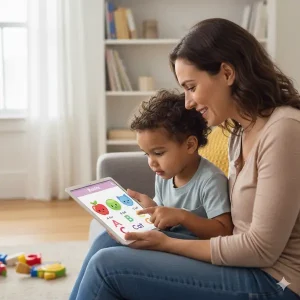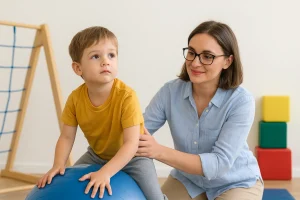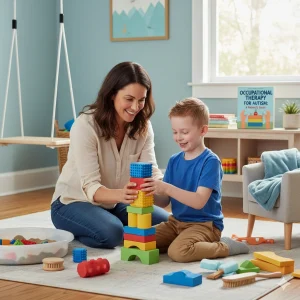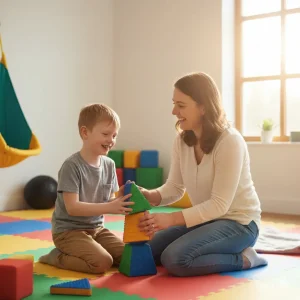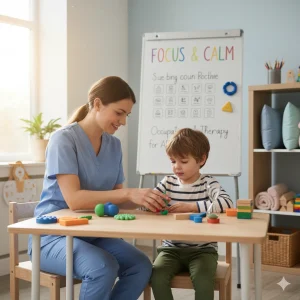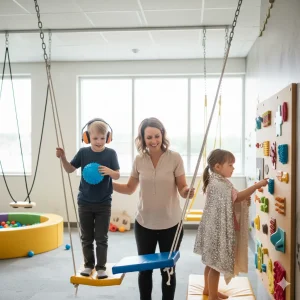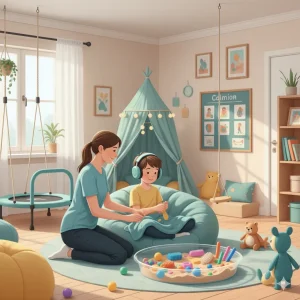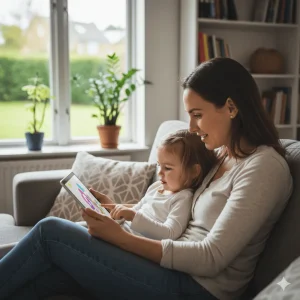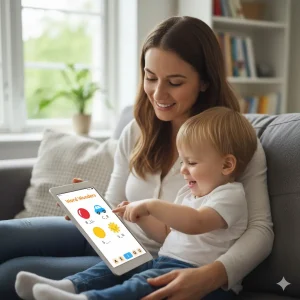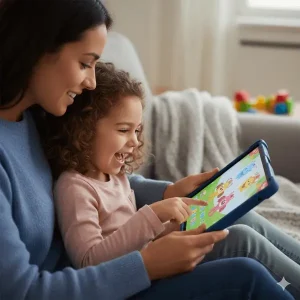10 Things Your 2-Year-Old Should Be Able to Do
Last Updated: April 23, 2025
Understanding the developmental milestones for 2-year-olds can help parents track their child’s growth across language, motor, social, and emotional areas. These milestones give a general idea of what most children are able to do at this age and can highlight strengths or areas that may need support.
The toddler stage—especially around age 2—is full of rapid changes. One day your child is babbling; the next, they’re climbing, stacking blocks, or observing quietly. Every child develops at their own pace, but having a clear roadmap can guide you in encouraging progress, identifying red flags, and seeking help when needed.
In this guide, we’ll walk through the top 10 developmental milestones for 2-year-olds, offer at-home strategies to support learning, and explain when to talk to a specialist—so you feel informed and empowered every step of the way.
Read More: Home Based Speech Therapy Activities for 1-2 Years Kids
Why It’s Important to Track Milestones at Age 2
The toddler years are packed with changes—and age 2 is a major turning point. In just a short time, your child is learning how to talk, move with more confidence, interact with others, and express big emotions in little bodies. It’s amazing to watch, but it can also leave you wondering: “Is my 2-year-old on track?”
That’s where developmental milestones come in. These are common skills that most children reach around the same age, like saying two-word phrases or walking up stairs with help. Milestones offer a helpful roadmap, showing what’s typical and what might need more support.
Keeping an eye on these areas can help you:
- Understand your child’s strengths (Are they more verbal? More physical?)
- Spot potential delays early
- Get the right support at the right time
- Start helpful conversations with your pediatrician or therapist
You don’t need to track every tiny detail, but having a general sense of what’s expected at age 2 can really make a difference. That’s especially true when it comes to early intervention. Research shows that the earlier children receive support—whether for speech, motor skills, or social development—the better their long-term outcomes.
10 Things Your 2-Year-Old Should Be Able to Do
At age 2, your toddler is learning, exploring, and growing faster than ever. While every child is different, there are a few common developmental milestones for 2-year-olds that most children reach around this time. These milestones give insight into how your little one is doing across language, motor skills, and social-emotional development.
1. Use 2- to 3-Word Sentences
You might hear phrases like:
- “Want juice”
- “Go park”
- “More milk”
These short sentences show that your child is putting words together to express thoughts—and that’s a big leap in language development. It means they’re learning how to communicate needs, ideas, and feelings using more than just single words.
Tip: Talk to your child throughout the day. Narrate what you’re doing, ask simple questions, and pause to let them respond—even with a word or gesture. Consistent interaction builds strong speech and language milestones.
2. Follow Simple Instructions
If your child responds when you say, “Give me the ball” or “Come here,” that’s a sign their listening and comprehension skills are coming along. This is also an early step in following routines and understanding structure.
Try this at home:
- “Bring me your shoes”
- “Put the book on the table”
- “Touch your nose”
These activities support language comprehension and cooperation.
3. Walk and Run with Confidence
Your toddler should be on the move—walking, running, climbing furniture, and maybe even trying to kick a ball. These are all signs of gross motor development, showing improved balance, strength, and coordination.
Encourage this by:
- Playing outside regularly
- Setting up safe climbing spaces
- Offering ride-on toys or balls to kick
If you notice delays in walking or difficulty with balance, you can always consult a pediatrician or a child development specialist. Wellness Hub also offers resources on toddler motor development.
4. Point to Objects or Pictures When Named
When you ask, “Where’s the dog?” and your child points to it in a book or around the house—that’s a strong sign of receptive language skills. It shows your child is understanding what words mean, even if they’re not saying much yet.
Easy ways to build this skill:
- Picture books with everyday items
- Simple games like “I Spy”
- Naming things during play or mealtime
5. Show Interest in Other Children
At age 2, toddlers often begin to show curiosity about other kids. This may not look like full-on play yet, but you’ll notice:
- Watching other children
- Playing side by side (parallel play)
- Imitating actions, like clapping or dancing
These behaviors mark the beginning of social development. It’s also a great time to gently introduce group play, music classes, or playground visits to encourage connection.
6. Express Needs and Emotions Clearly
Your toddler should be using words, gestures, or even facial expressions to let you know how they feel or what they need. This includes:
- Saying “hungry” or “tired”
- Pointing to a snack
- Crying when overwhelmed or needing comfort
Recognizing and expressing emotions is key to building emotional regulation and early communication.
Pro tip: Acknowledge their feelings. Phrases like, “I see you’re upset,” or “Are you hungry?” teach them that emotions are okay—and manageable.
7. Stack Blocks or Sort Shapes
If your toddler can stack a few blocks or place shapes into a sorter, it’s a great sign of growing cognitive and fine motor development. These skills show your child is learning how to:
- Use their hands and eyes together
- Focus on a goal
- Experiment with trial and error
Activities to try:
- Simple shape sorters or nesting cups
- Soft blocks or stacking rings
- Puzzles with large pieces
These not only keep little hands busy but also build coordination and confidence. And if your child is still learning to stack or sort, no worries—just turn it into a playful learning moment.
8. Name Body Parts or Familiar Objects
At this stage, your child might surprise you by pointing to their nose, naming their eyes, or calling out items like “ball” or “banana.” This reflects progress in memory, vocabulary, and language comprehension.
To encourage this:
- Name body parts during bath time (“Let’s wash your toes!”)
- Play “Where’s your…?” games
- Use books with large, labeled pictures
These simple activities lay a strong foundation for language development in toddlers.
9. Imitate Adults and Older Kids
Has your toddler started pretending to stir a pot, “talk” on a toy phone, or sweep the floor with a tiny broom? These cute moments are more than just mimicry—they’re signs of developing social-emotional understanding and early imaginative play.
Imitation helps children:
- Understand daily routines
- Practice adult roles
- Learn empathy and social cues
Playing pretend is a powerful tool for emotional growth. If your toddler watches you closely or tries to copy siblings, they’re learning how the world works—one little act at a time.
10. Show Early Problem-Solving
When your toddler tries to fit puzzle pieces together, open a snack container, or figure out how to reach a toy on a high shelf, they’re engaging in early problem-solving.
These moments may include:
- Trying different puzzle pieces until one fits
- Figuring out how to remove a lid
- Moving a chair to climb for something “out of reach” (watch out for this one!)
Problem-solving is a big part of cognitive development in toddlers—and it’s built through curiosity, persistence, and hands-on play.
What If My Child Isn’t Doing All These Yet?
First things first: take a deep breath. It’s completely normal for children to develop at their own pace. Just because your 2-year-old isn’t doing everything on the list doesn’t mean something is wrong. Milestones are helpful guidelines—not a strict timeline.
Every child has their own rhythm. Some toddlers talk early but take longer to climb stairs. Others are physically active but speak less. What matters most is progress over time, not hitting every skill by a certain date.
That said, there are times when a developmental delay may need a little extra support—and catching it early can really help.
Here’s what you can do if you have concerns:
- Talk to your pediatrician about what you’re noticing
- Track patterns over time (e.g., Is your child trying to communicate in other ways?)
- Get a developmental screening if recommended
- Reach out for professional support when needed
Delays aren’t something to fear. In fact, with the right help, many children quickly catch up or find new ways to learn that work best for them.
Simple Tips to Support Your Toddler’s Development at Home
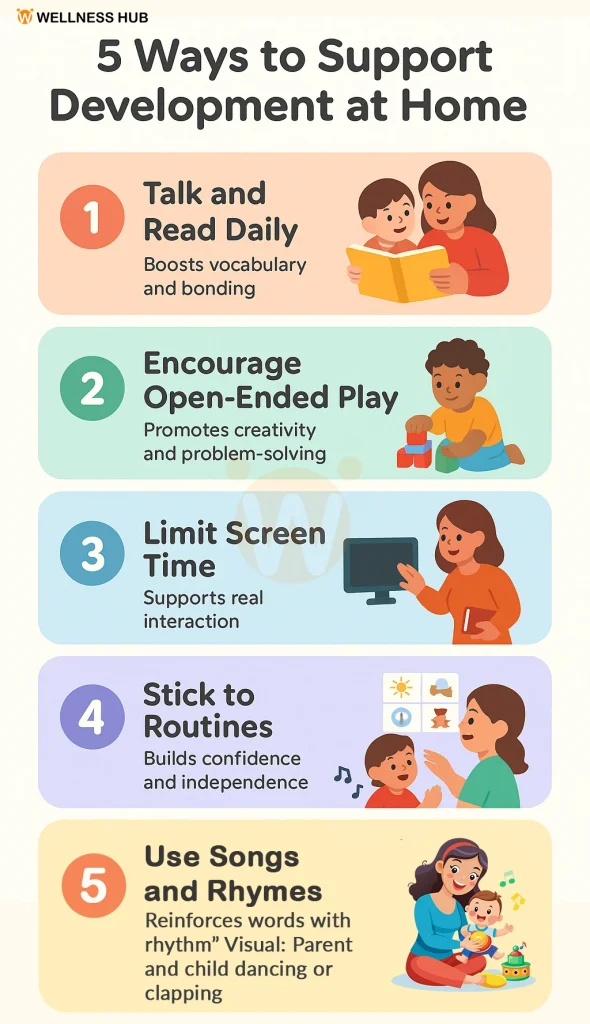
1. Talk and Read Together Every Day
Even if your child isn’t saying much yet, they’re absorbing everything. Hearing language regularly builds vocabulary, improves understanding, and supports early speech skills.
Try this:
- Describe what you’re doing: “I’m cutting the apple. Now we put it in the bowl.”
- Ask questions and wait: “Where’s the ball?” (even if they don’t answer, they’re learning!)
- Read the same picture book repeatedly—toddlers love repetition and it helps words stick.
2. Offer Open-Ended Play Opportunities
Let your child explore toys that don’t “do” much on their own. This encourages imagination, decision-making, and creativity.
Great open-ended toys include:
- Stacking cups or blocks
- Pretend kitchen items
- Playdough, crayons, or big puzzle pieces
Give them space to explore on their own and avoid correcting how they play. There’s no “wrong way” in toddler play!
3. Limit Screen Time and Encourage Real-Life Interaction
Screens can be tempting, but they don’t offer the same learning benefits as face-to-face play. The more your child engages with real people and objects, the more they learn.
Try:
- Short video chats with family instead of cartoons
- Music and dancing together instead of passive watching
- Sensory play like water bins or sand trays instead of digital games
4. Use Routines to Build Independence
Toddlers thrive on predictability. Routines help them feel safe—and give them chances to participate and learn.
Involve them in daily tasks like:
- Putting toys away after play
- Washing hands before meals
- Choosing between two outfits in the morning
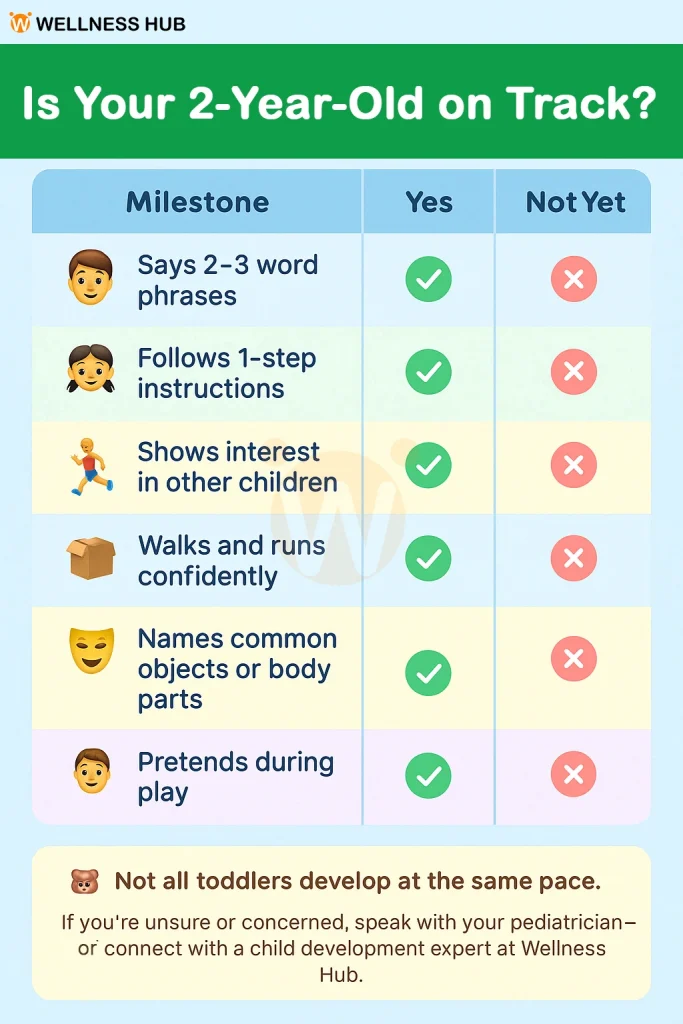
Conclusion
Every 2-year-old grows in their own special way. Some talk early, some run everywhere—every path is different. Milestones are just a guide to help you support your child, not a checklist to worry about. Celebrate every small win, stay curious, and don’t be afraid to ask for help if something feels off. You know your child best! Need support? Wellness Hub offers expert tips on speech delays, toddler milestones, and early learning. Your love and support are the most powerful tools for your child’s development.
Frequently Asked Questions:
1. What should my 2-year-old be doing developmentally?
By age 2, many toddlers can say short phrases, follow simple instructions, run, stack blocks, and show interest in other kids. These are typical developmental milestones for 2-year-olds.
2. Is it normal for a 2-year-old not to talk yet?
Some children talk later than others. If your 2-year-old isn’t using words or phrases, it’s a good idea to talk to your pediatrician or a speech therapist. Early help can make a big difference.
3. How many words should a 2-year-old say?
Most 2-year-olds use around 50 or more words and start putting two words together (like “want toy”). But every child is different. The focus is on progress over time.
4. How can I help my 2-year-old learn to talk?
Talk to them often, read books together, name objects around the house, and play games that involve pointing and naming. Simple, daily interaction builds strong language skills.
5. When should I worry about my toddler’s development?
If your child isn’t walking, talking, following instructions, or showing interest in people or toys by 2 years old, it’s okay to ask for help. Early intervention leads to better outcomes.
6. What are signs of delayed development in a 2-year-old?
Common signs may include no clear words, trouble walking, not following instructions, or limited eye contact. Always talk to your pediatrician if you’re unsure.
7. How can I support my toddler’s development at home?
Read and talk to them daily, limit screen time, create a routine, and encourage open-ended play. These simple steps help support learning and independence.
8. What social skills should a 2-year-old have?
At this age, toddlers may play alongside others (called parallel play), copy actions, and show basic emotions. These are early signs of social development.
9. Should my 2-year-old know shapes and colors?
Some 2-year-olds begin to recognize shapes or colors, but it’s not expected of all. Focus more on interactive play than formal learning at this stage.
10. Where can I get help if I’m worried about my toddler’s milestones?
If you have concerns, speak with your child’s doctor or connect with professionals. Wellness Hub offers expert guidance and early intervention support to help your child thrive.
About the Author:
Shravanaveena Gajula
M.Sc ., Speech and Language Pathology (5+ years of experience)
Shravanaveena Gajula is a dedicated Audiologist and Speech-Language Pathologist with a BASLP and an M.Sc in Speech and Language Pathology. With experience spanning multiple settings, including Wellness Hub and Ashray Akruti, Veena specializes in a wide range of disorders from developmental issues in children to speech and language assessments in adults. Her expertise includes parent counseling, managing speech sound and fluency disorders, and creating individualized therapy programs. Veena is also PROMPT certified and an author of several insightful blogs on speech and language pathology, aiming to educate and assist caregivers in supporting their loved ones.
Book your Free Consultation Today
Parent/Caregiver Info:
Client’s Details:
* Error Message
